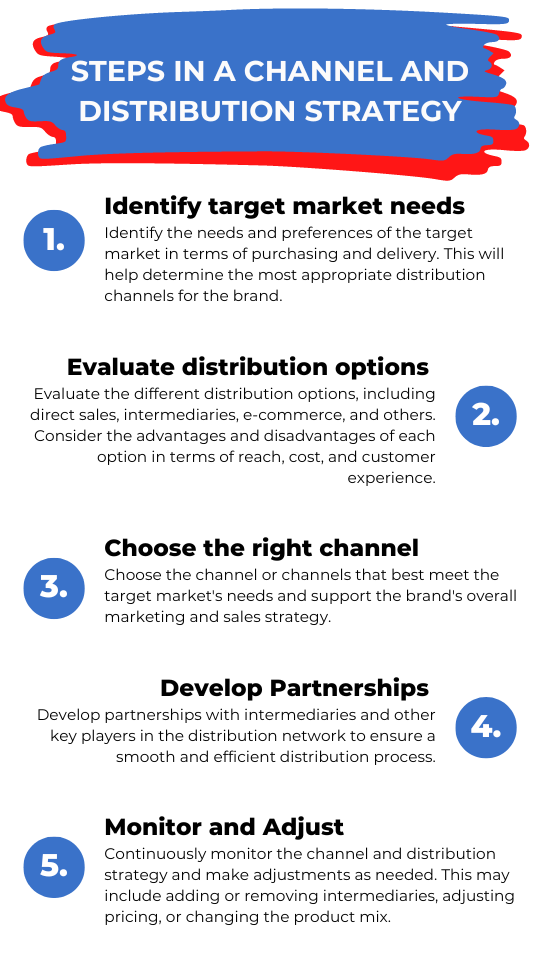Entering a new market is an exciting and challenging journey for any company. The United Kingdom, with its diverse and well-developed economy, is an attractive market for many businesses. However, market entry in the UK can be complex and challenging, with many obstacles to overcome.
This article provides a roadmap for companies considering market entry in the UK. It will help companies overcome the challenges of entering a new market and take advantage of the opportunities that the UK has to offer.
“Bringing a new product to the UK market requires a deep understanding of local consumer needs and preferences, as well as a commitment to providing high-quality customer service.” —Sir Martin Sorrell, founder of WPP, the world’s largest advertising and marketing company.
We will cover the key steps in the market entry process, from conducting market research to launching a product or service in the UK. We will discuss the importance of market research, the regulatory environment, target market and segmentation, competition analysis, marketing and sales strategy, channel and distribution strategy, financing and funding, and launch plan.
Whether you are a start-up or an established business, this article will provide the information and guidance you need to enter the UK market successfully. The goal is to equip readers with the tools and knowledge to make informed decisions and achieve their market entry goals.
By the end of this article, you will have a better understanding of the challenges and opportunities of market entry in the UK and a clear plan for navigating the process from research to launch.
Market Entry Market Research
Market research is crucial in market entry, providing valuable information about the target market, competition, and consumer trends. With proper market research, companies can avoid making costly mistakes, such as entering an unprofitable market or failing to differentiate from the competition.
There are two main market research types: secondary and primary.
Primary research involves collecting data directly from potential customers and stakeholders. This type of research can be more time-consuming and expensive, but it provides valuable insights into the target market, competition, and consumer trends. Some standard primary research methods include surveys, focus groups, and interviews.
Secondary research involves gathering data from industry reports, government statistics, and market reports. This type of research is relatively low-cost and quick to complete, making it a good starting point for market research.

Gathering data on the target market, including demographic, psychographic, and behavioral data, is important when conducting market research. This information can be used to segment the target market and develop a marketing strategy that will resonate with the target audience.
Brands should also conduct a competition analysis to understand the strengths and weaknesses of competitors, including their market position, marketing strategies, and target segments.
To gather data on consumer trends, companies should pay attention to industry reports and consumer surveys and follow news and social media to stay up-to-date on the latest trends and preferences.
UK Regulatory Environment
The UK is generally considered a friendly and attractive market for new brands seeking to enter. It is known for having a stable and well-established legal system, a large and affluent consumer market, and a well-developed infrastructure for doing business. The UK is also part of the EU, which provides access to a market of over 500 million consumers.
However, like any market, the UK has unique challenges and complexities. For example, the UK has a relatively high level of regulation, particularly in data protection, health and safety, and environmental conservation. This can create additional compliance and administrative costs for companies.
When compared to other countries, the UK is a favorable market for new brands, products, and services, particularly when compared to emerging markets, which may have more political, economic, or regulatory risks. However, it is vital for companies to consider their specific needs and objectives carefully and to conduct a thorough market analysis before deciding to enter the UK market.
The legal and regulatory environment for doing business in the UK is complex and requires careful consideration by companies seeking to enter the market.
Brands need to understand the legal and regulatory framework for doing business in the UK and seek professional advice as necessary. This will help ensure that your company fully complies with all relevant laws and regulations and can operate effectively and efficiently in the UK market.
The following are some of the key aspects of the regulatory environment that companies need to be aware of:
- Visas: If you or your employees are from outside the European Union (EU), you may need to obtain a visa to work and conduct business in the UK. There are several types of visas available, including work visas, business visas, and investor visas, and each has its requirements and restrictions.
- Setting up a business: To set up a business in the UK, you will need to choose the type of business structure you want to use, such as a sole trader, partnership, limited liability partnership, or limited company. You will also need to register your business with Companies House, the UK’s official register of companies.
- Registering for taxes: Once you have set up your business, you must register for taxes with HM Revenue & Customs (HMRC). This includes registering for corporation tax, value-added tax (VAT), and paying applicable taxes and national insurance contributions.
- Relevant laws and regulations: Organizations must be aware of applicable laws and regulations to their specific business sector, including health and safety regulations, data protection laws, and environmental regulations. For example, companies selling products in the UK must comply with the Consumer Contracts Regulations, which set out the rights of consumers when buying goods or services online.
- Policies: Brands must also be aware of relevant policies impacting their business, such as the UK’s Brexit agreement and all applicable trade agreements with other countries. Brands must also be mindful of any policies related to Brexit, such as customs procedures and tariffs.
Import/Export Regulations and Tariffs
Import and export regulations and tariffs play a crucial role in the success of a market entry in the UK, and companies should carefully research and understand these regulations before entering the market.
One crucial aspect to consider is the United Kingdom’s membership in the European Union, which affects trade between the UK and other EU countries. With the UK’s departure from the EU in 2021, businesses must navigate new trade agreements and regulations when importing or exporting goods between the UK and the EU.
Additionally, companies should be aware of any taxes or duties that may apply to their products or services and understand the process for obtaining any necessary licenses or permits. This can include value-added tax (VAT), customs duties, and excise taxes.

We recommend that companies seek advice from legal and tax experts to fully comply with all UK import/export regulations and tariffs. This can help minimize the risk of delays or fines and provide a smoother market entry process.
UK Target Market and Segmentation
Identifying and segmenting the target market is critical to a successful market entry strategy in the UK. The following are some main steps for identifying and segmenting the target market in the UK:
- Demographic data: Collect data on the age, gender, income, education level, and other demographic characteristics of the target market in the UK. This information can be found from secondary sources, such as government statistics, or through primary research methods like surveys or focus groups.
- Psychographic data: Gather data on the values, beliefs, lifestyle, and personality characteristics of the target market. This information can be obtained through focus groups, interviews, or other qualitative research methods.
- Behavioral data: Collect data on the target market’s purchasing habits, product usage, and decision-making process. This information can be garnered through surveys, customer interviews, or other research methods.
Once you have collected this information, you can segment the target market into smaller, more defined segments with similar characteristics. This allows you to develop a more focused and effective marketing strategy that will resonate with the target market.

For example, let’s assume your target market is predominately young and tech-savvy consumers. In that case, you might focus your marketing efforts on digital channels such as social media, influencer marketing, and e-commerce platforms. Conversely, if your target market is more mature and traditional, you might focus your marketing efforts on more traditional channels such as print advertising, direct mail, and in-store promotions.
Localization: Understanding the Local Culture, Traditions, and Values
The United Kingdom has a rich and diverse culture, with a unique set of traditions and values deeply rooted in its history. By taking the time to understand and appreciate the UK’s local culture, traditions, and values, brands can increase their chances of success in the market.
“The UK is one of the world’s largest and most developed consumer markets, offering a wealth of opportunities for brands looking to reach new audiences.” – Richard Branson, founder of the Virgin Group.
Localization is adapting products and services to meet the specific needs and preferences of the local market. This includes everything from product design and packaging to marketing and customer service. Brands that take the time to localize their offerings are more likely to resonate with the target audience and build a strong brand image in the market.

There are several factors that brands should consider when localizing their products and services for the UK market, including:
- Language: English is the official language of the UK, but there are regional variations and dialects that brands should be aware of. Companies should ensure that their marketing materials, product labels, and customer service are written in clear, concise English that is easy to understand.
- Measurements and Units: The UK uses a different system of measurements and units compared to other countries. Brands should ensure that their products and packaging are labeled in the appropriate units to avoid customer confusion.
- Cultural and Social norms: Brands should familiarize themselves with the cultural and social norms of the UK, including holidays, traditions, and customs. This will help them to avoid offending customers and create a positive brand image in the market.
- Consumer preferences: Brands should research the consumer preferences of the UK market to ensure that their products and services meet the needs and wants of their target audience. This includes everything from product features and design to pricing and marketing.
Competition Analysis
UK consumers generally have a positive attitude towards new and foreign brands entering their market. They are known for being open-minded and curious and are often willing to try new products and services from different countries.
However, it’s important to note that new and foreign brands need to be well-prepared and understand the unique characteristics of the UK market. They should be able to differentiate themselves from local competitors and offer a unique value proposition to UK consumers.
“The UK is a great place to do business, with a highly skilled workforce, low levels of corruption, and a supportive legal system that makes it easier to protect intellectual property.” – Bill Gates, co-founder of Microsoft.
Conducting a competition analysis is essential in understanding the UK’s competitive landscape and developing a successful market entry strategy. The following are some tips for conducting a competition analysis:
- Identify main competitors: Start by identifying the key competitors in the UK market. This can be done through online research, industry reports, and other secondary sources.
- Analyze market position: Assess the market position of each competitor, including their market share, brand awareness, and customer loyalty. This information can help you understand their strengths, weaknesses, and market position.
- Evaluate marketing strategies: Analyze the marketing strategies of each competitor, including their advertising, promotions, and distribution channels. This information can help you understand how they are reaching their target market and what makes them unique.
- Assess target segments: Identify the target segments of each competitor and understand how they are positioned in the market. This information can help you understand how each competitor differentiates themselves in the market and what opportunities may exist for your brand.
- Evaluate strengths and weaknesses: Evaluate the strengths and weaknesses of each competitor, including their product offerings, pricing strategy, and customer service. This information helps you identify areas where your brand can differentiate itself.
Marketing and Sales Strategy
The following are some key steps to consider when creating a marketing and sales strategy:
- Create a Unique Value Proposition: Develop a unique value proposition that differentiates your brand from the competition. Consider the needs and desires of the target market and what makes your brand unique.
- Conduct a SWOT analysis: Conduct a SWOT analysis to identify the strengths, weaknesses, opportunities, and threats of your brand. This information can help you develop a marketing and sales strategy that leverages your strengths and minimizes your weaknesses.
- Develop a marketing mix: Develop a marketing mix that includes product, price, promotion, and place. Consider the target market, competition, and consumer trends when developing each element of the marketing mix.
- Choose the right channels: Choose the right channels to reach and engage with the target market. This may include online channels such as social media, email marketing, and display advertising, and offline channels such as events and trade shows.
- Measure and adjust: Continuously measure and adjust the marketing and sales strategy to ensure that it is effective and achieves desired results. This may include adjusting the marketing mix, refining the target market, or adjusting the sales strategy.
Brand Awareness: Establishing Your Reputation in the UK Market
Brand awareness is one of the most crucial factors in establishing a successful market entry in the UK. A strong brand presence can help companies gain credibility and attract customers, making it essential for companies to invest in targeted marketing and PR efforts. There are several key strategies for building brand awareness in the UK, including:
- Develop a Unique Value Proposition: Companies must differentiate themselves from the competition by creating a unique value proposition that sets them apart. This could be innovative products, exceptional customer service, or a commitment to sustainability, for example.
- Utilize Digital Marketing: The UK is a highly digitized market, and companies must utilize digital channels to reach their target audience. This includes social media, email marketing, and search engine optimization (SEO), among others.
- Leverage Influencer Marketing: Influencer marketing is a powerful tool for building brand awareness in the UK. Companies can work with influencers who align with their brand values and have a large following on social media platforms to reach their target audience.
- Attend Trade Shows and Events: Attending trade shows and events can help companies meet potential customers, showcase their products and services, and build their brand reputation in the UK.
- Invest in PR: Investing in PR can help companies establish their brand in the UK by securing media coverage and building relationships with key stakeholders.

Building brand awareness in the UK requires effort and resources, but the payoff can be significant. Companies that invest in targeted marketing and PR efforts are more likely to build a strong brand presence, attract customers, and achieve long-term success in the UK market.
Partnerships and Alliances
It is essential for companies entering the UK market to have a clear understanding of the local business landscape and the opportunities available for forming partnerships and alliances with local businesses.
These relationships can offer numerous benefits, including access to local knowledge and established networks and distribution channels that can help companies quickly establish themselves in the market.
When identifying potential partners, companies should consider businesses with complementary products or services and a similar target market. Networking with local organizations and industry groups can also be a great way to identify potential partners and participate in trade shows and events specific to the industry.
Brands should also consider the type of partnership or alliance most beneficial for their business. For example, a joint venture can provide shared resources and risk-sharing, while a strategic alliance can offer opportunities for collaboration and increased market share. On the other hand, a distribution agreement can provide access to established distribution channels and speedier entry into the UK market.
Channel and Distribution Strategy
A well-designed channel and distribution strategy is critical for successful market entry in the UK. By identifying target market needs, evaluating distribution options, choosing the right channel, developing partnerships, and continuously monitoring and adjusting the strategy, brands can ensure that their products are effectively and efficiently distributed to the target market.

Customer Service in the UK
The UK is known for having high standards when it comes to customer service, and customers expect a quick response to their inquiries and a high level of support.
To meet these expectations, companies should invest in the right infrastructure to support their customers, such as a well-staffed call center or online chat service. Brands should also consider offering a variety of channels for customers to reach out, including email, phone, and social media.
In addition to investing in customer service infrastructure, companies should also focus on providing high-quality service. This means training customer service representatives to be knowledgeable, friendly, and effective in resolving customer issues. Brands should also have clear policies and procedures to handle customer complaints and ensure customer satisfaction.
Finally, brands should strive to create a positive customer experience that sets them apart from the competition. This may include offering a loyalty program, creating a helpful and user-friendly website, or providing value-added services to enhance the customer experience.
Financing and Funding
Entering a new market, such as the UK, often requires significant financial resources. Careful planning and execution are critical for securing the financing and funding necessary to support a market entry into the UK. It is essential to consider all the options for financing and funding a market entry to ensure that the venture has the resources it needs to be successful. The following are some key points to consider:
- Determine funding needs: Establish a clear understanding of the funding required to support the market entry. This should include an estimate of the costs associated with product development, marketing, distribution, and other essential activities.
- Explore financing options: Consider all available financing options, including loans, grants, crowdfunding, and others. Evaluate the advantages and disadvantages of each option in terms of interest rates, repayment terms, and other key terms.
- Secure funding: Secure the necessary funding by applying for loans, grants, or crowdfunding. Be prepared to provide a detailed business plan and financial projections to support the application.
- Plan for cash flow management: Establish a cash flow management plan to ensure the business has the resources it needs to meet its obligations as they come due. This may include forecasting cash flows, establishing lines of credit, and other measures.
Market Monitoring: An Ongoing Process for Successful Market Entry in the UK
Ongoing market monitoring and analysis are critical components of a successful market entry in the UK. As the market and consumer trends evolve, companies must continually gather data to stay informed and adapt their strategies. To succeed, companies need to understand the market landscape and be able to respond quickly to changes.
Market monitoring enables companies to stay informed about market trends, consumer behavior, and competitive activity. This information can help brands make informed decisions about product development, marketing, and distribution strategies. Companies can also use market monitoring to identify new opportunities and areas for growth in the UK market.
There are several ways companies can gather market intelligence and monitor the UK market, including:
- Conducting market research and surveys to gather data on consumer preferences and behaviors.
- Monitoring sales trends and customer feedback to understand customer needs and preferences.
- Keeping a close eye on the competition and their activities, including new product launches, marketing campaigns, and distribution strategies.
- Utilizing market intelligence platforms and reports to access up-to-date data on market trends and consumer behavior.
- Engaging with industry experts and local organizations to stay informed about market developments and trends.
Brands should invest the time and resources to continually gather market intelligence and monitor their performance in the UK market to ensure continued success.
How market research can help you with your UK market entry goals
Market research is essential in any market entry strategy, and the UK is no exception. Brands looking to enter the UK market should take the time to understand the country’s target audience and consumer behavior. This involves market research to gather insights into consumer preferences, behaviors, and buying patterns. This information can then be used to tailor products and services to meet the needs of UK consumers, increase brand awareness, and improve marketing efforts.

It is also essential for companies to assess the competition and market saturation in the UK. This includes analyzing the market size, growth potential, and key players in the industry. This information can help companies identify trends and opportunities in the market and determine the best strategies for differentiating their products and services from those of their competitors.
In addition to market research, companies should conduct a SWOT analysis to evaluate their strengths, weaknesses, opportunities, and threats in entering the UK market. This involves considering the internal and external factors that may impact their ability to succeed, including their resources, capabilities, market position, and competition. By conducting a thorough SWOT analysis, companies can identify areas for improvement and develop a more effective market entry strategy.
Conclusion and Key Takeaways
Market entry into the UK can present significant opportunities for companies looking to expand their reach. However, it is essential to approach this process with careful planning and preparation to ensure success. From conducting thorough market research to understanding the legal and regulatory environment, companies need to consider a range of factors to ensure a successful entry.
“The UK is known for its innovative and entrepreneurial spirit, and companies that are able to tap into this energy and creativity can achieve great success in the market.” – Lord Alan Sugar, British business magnate, investor, and politician.
The key takeaways from this blog include the importance of:
- Conducting thorough market research to understand the target market, consumer trends, and competition.
- Familiarizing yourself with the legal and regulatory environment, including obtaining visas, setting up a business, and registering for taxes.
- Developing a marketing and sales strategy that resonates with the target market and differentiates from the competition.
- Securing the necessary financing and funding to support market entry.
We hope this comprehensive guide has provided valuable information and insights to help companies considering market entry in the UK. However, this is just the beginning. Brands should also seek additional resources and support to ensure a successful entry, such as consulting with market experts, consultants, or lawyers.
We wish you the best of luck in your market entry journey and encourage you to be proactive, strategic, and well-prepared as you navigate the opportunities and challenges of entering the UK market. Kadence International has 30+ years of experience in market research and is more than happy to discuss your UK market research needs.


